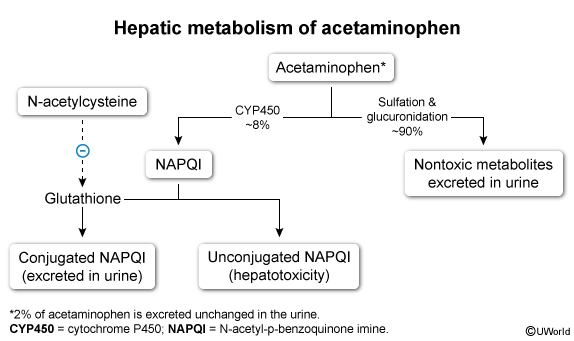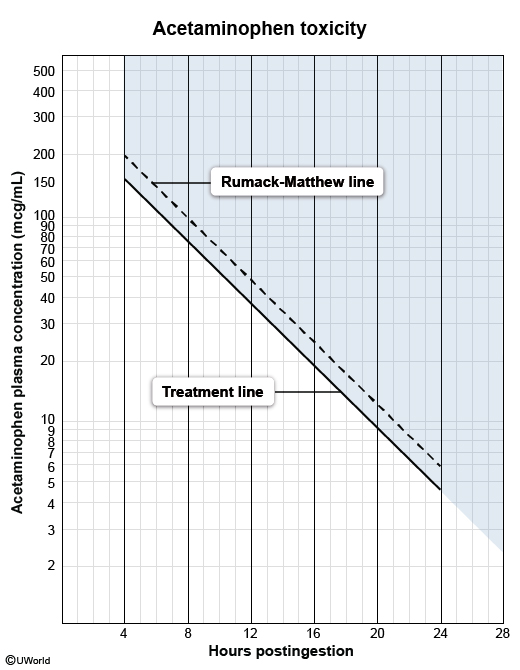Acetaminophen Toxicity
Article Sections
Introduction
Acetaminophen (paracetamol) is a widely used over-the-counter analgesic medication. Although generally safe at therapeutic doses, acetaminophen overdose can cause severe and rapidly progressive hepatotoxicity. Following an acute toxic ingestion, the clinical course typically occurs in stages, starting with mild, nonspecific symptoms (eg, nausea, malaise) followed by right upper quadrant abdominal pain, rising aminotransferases, and, in severe cases, fulminant liver failure within a matter of days. Early administration of the antidote, N-acetylcysteine (NAC), is the most effective treatment to prevent and treat liver injury.
Pathophysiology
Acetaminophen is a common antipyretic and analgesic drug that is metabolized by the liver (Figure 1). Although it is mostly converted to nontoxic metabolites by sulfation and glucuronidation, a small amount of the drug is metabolized by cytochrome P450 enzymes (including subtype 2E1) into the toxic metabolite N-acetyl-p-benzoquinone imine (NAPQI).
Continue Learning with UWorld
Get the full Acetaminophen Toxicity article plus rich visuals, real-world cases, and in-depth insights from medical experts, all available through the UWorld Medical Library.
Figures

